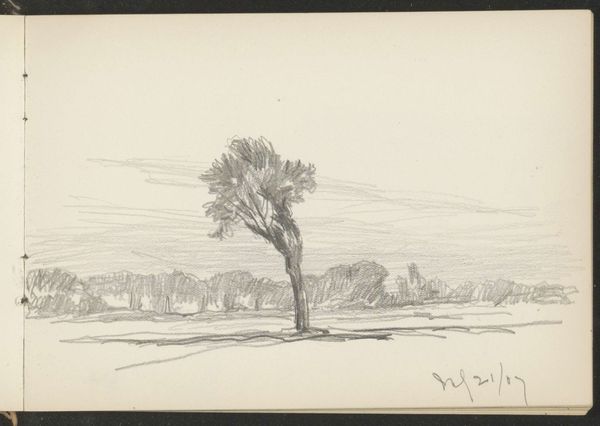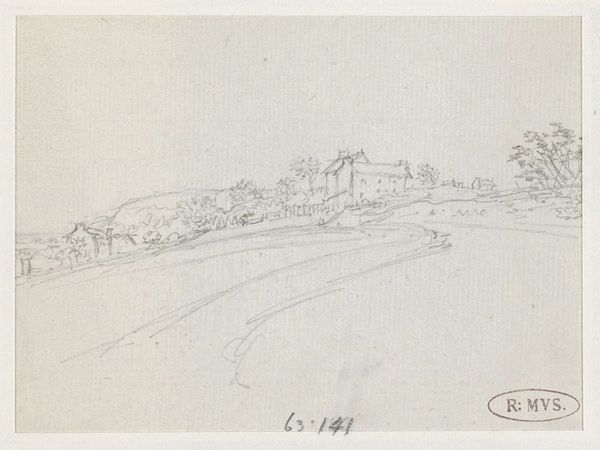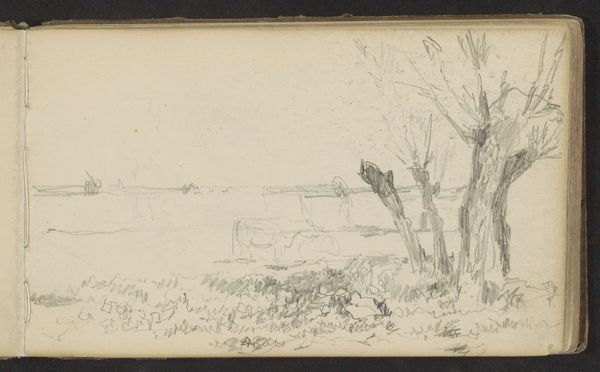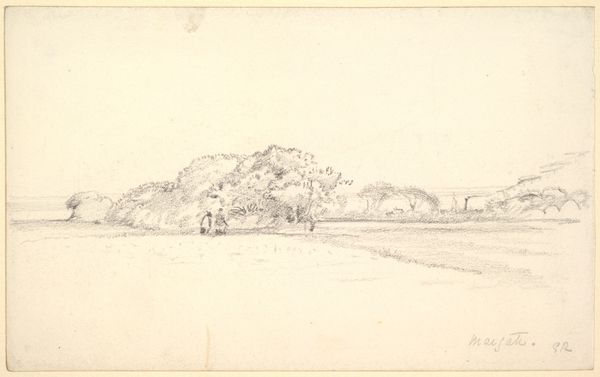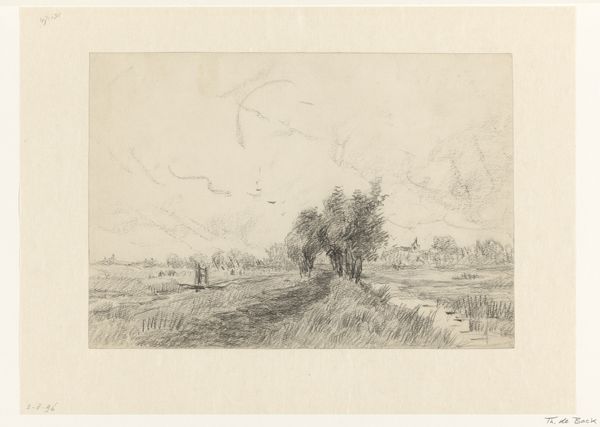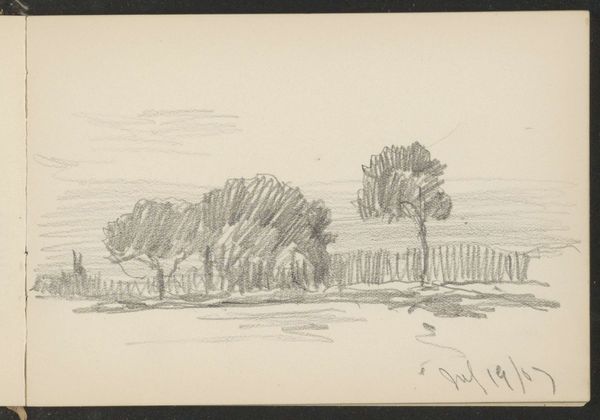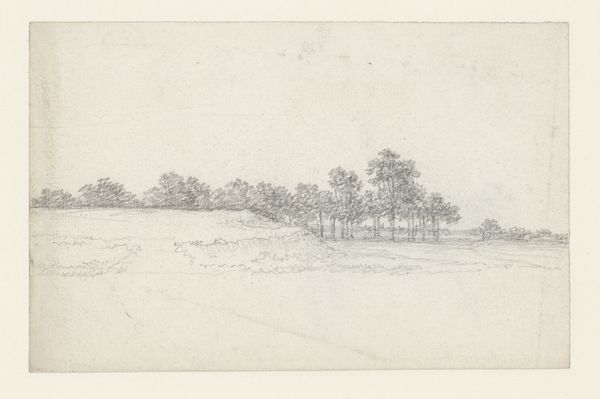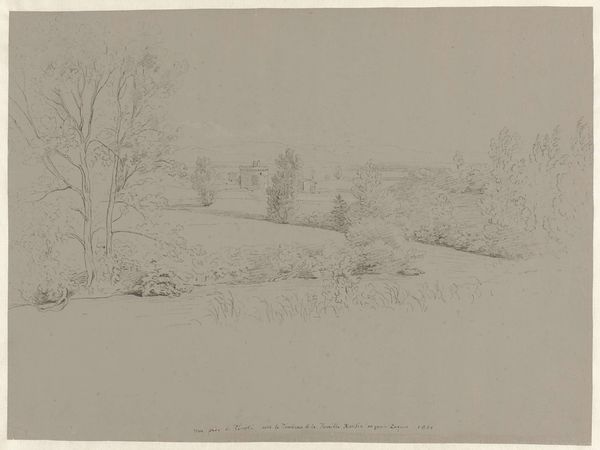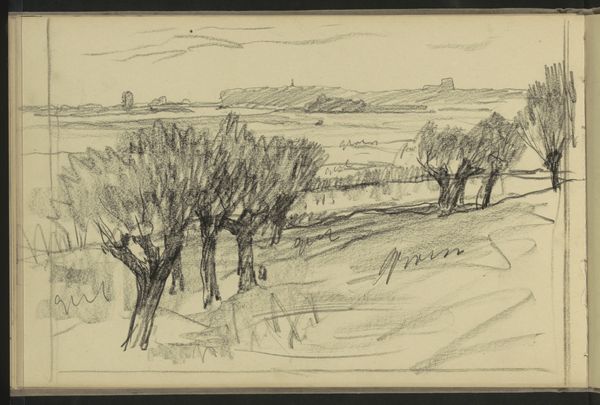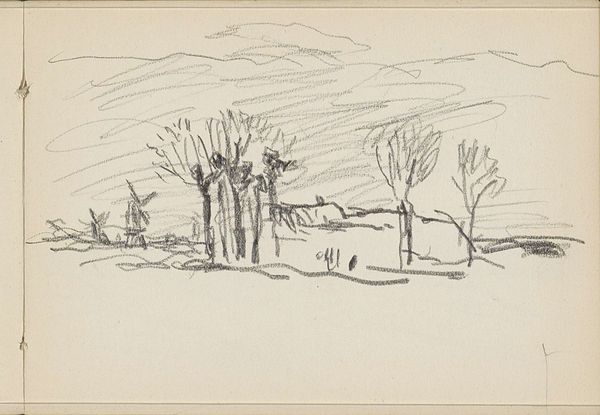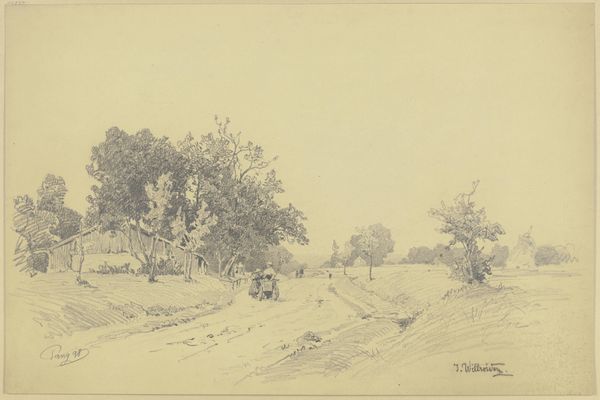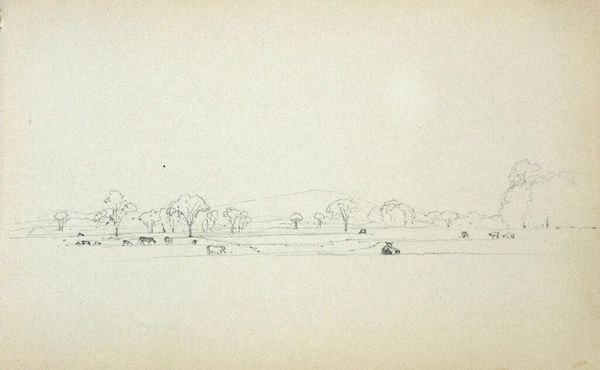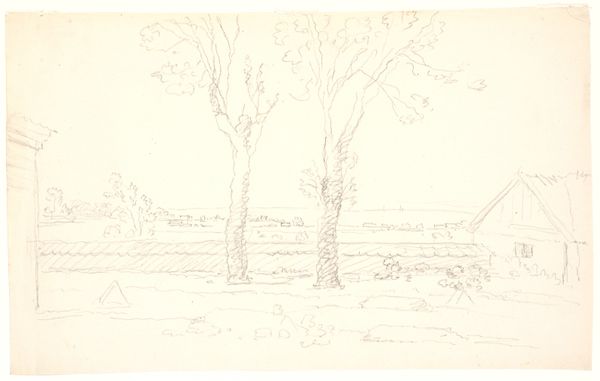
drawing, paper, pencil
#
drawing
#
ink drawing
#
landscape
#
paper
#
pencil
#
modernism
#
realism
Copyright: Rijks Museum: Open Domain
Curator: This is Alexander Shilling's 1907 drawing, "Landschap met water en molens," or "Landscape with Water and Windmills." Executed in pencil and ink on paper, it depicts a Dutch landscape. Editor: It's a quiet, unassuming scene, isn't it? Almost a whisper of a landscape. The windmills on the horizon give it a touch of Dutch romanticism. The large mass in the center, made of overlapping vertical strokes, suggest trees, but without much detail. It all feels very open, spare, and yet… peaceful. Curator: Indeed. Shilling was part of a generation grappling with how to represent the world, post-Impressionism, amidst rapid industrialization. These rural scenes were powerful statements in their own ways, about returning to tradition. Windmills especially took on a significance beyond their practical use, becoming symbolic of a particular kind of national identity. Editor: Definitely. And while this drawing itself feels rather unassuming, I wonder about the function it might have played, as either a plein air sketch or even preparatory for something bigger. Consider the accessibility windmills symbolized for all of the low countries. This imagery could very well evoke critical thinking of industrial progress and its disproportionate impact on various groups within the culture. Curator: Precisely. And consider how the date, 1907, sits within a specific socio-political moment. The rise of socialist movements across Europe were starting to grapple with such topics, viewing these images through very specific cultural and socio-economic lenses. It all reinforces an existing mythology, that might serve to create or underscore an artificial class system, based on ideas that serve only some groups within the larger national collective. Editor: Yes, you bring up very relevant points on how such rural imageries might perpetuate traditional narratives. Its deceptive calmness also lends itself toward highlighting the impact on a land undergoing transformations. I leave seeing this scene and how it connects to ideas about labor, cultural pride, and shifting economies of the turn of the last century. Curator: It really brings attention to the role art plays in the construction of national narratives.
Comments
No comments
Be the first to comment and join the conversation on the ultimate creative platform.
